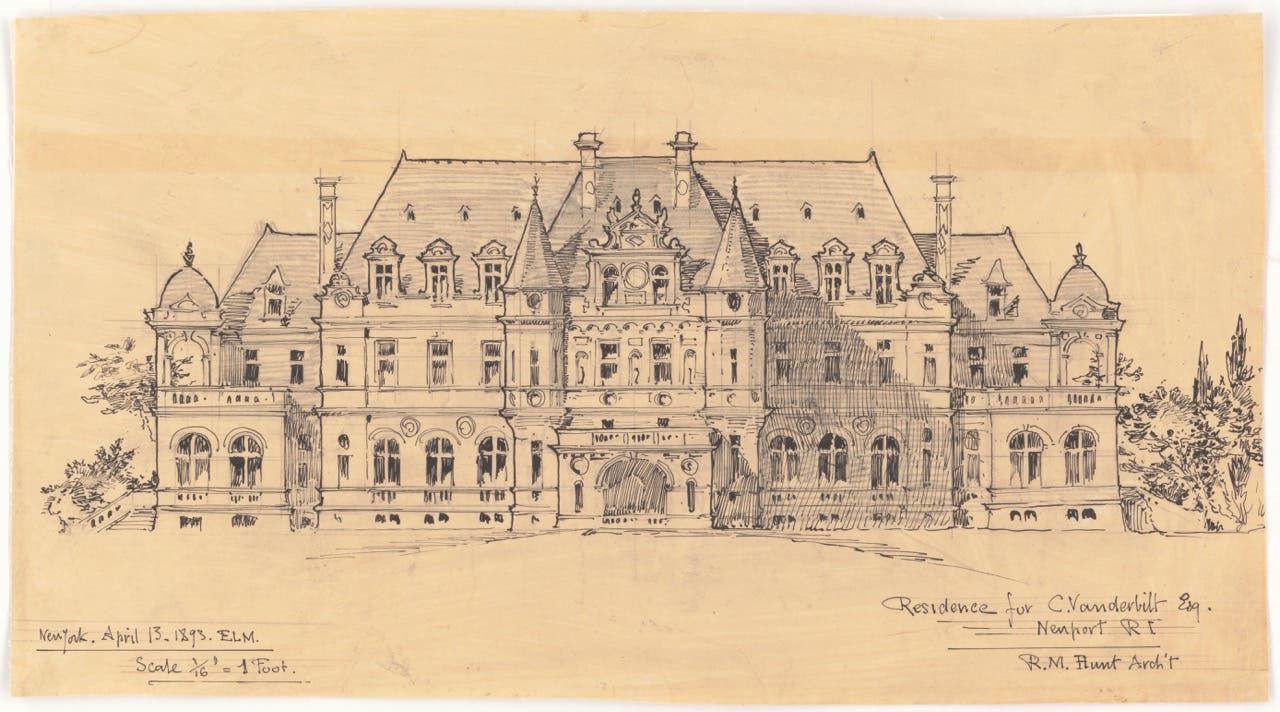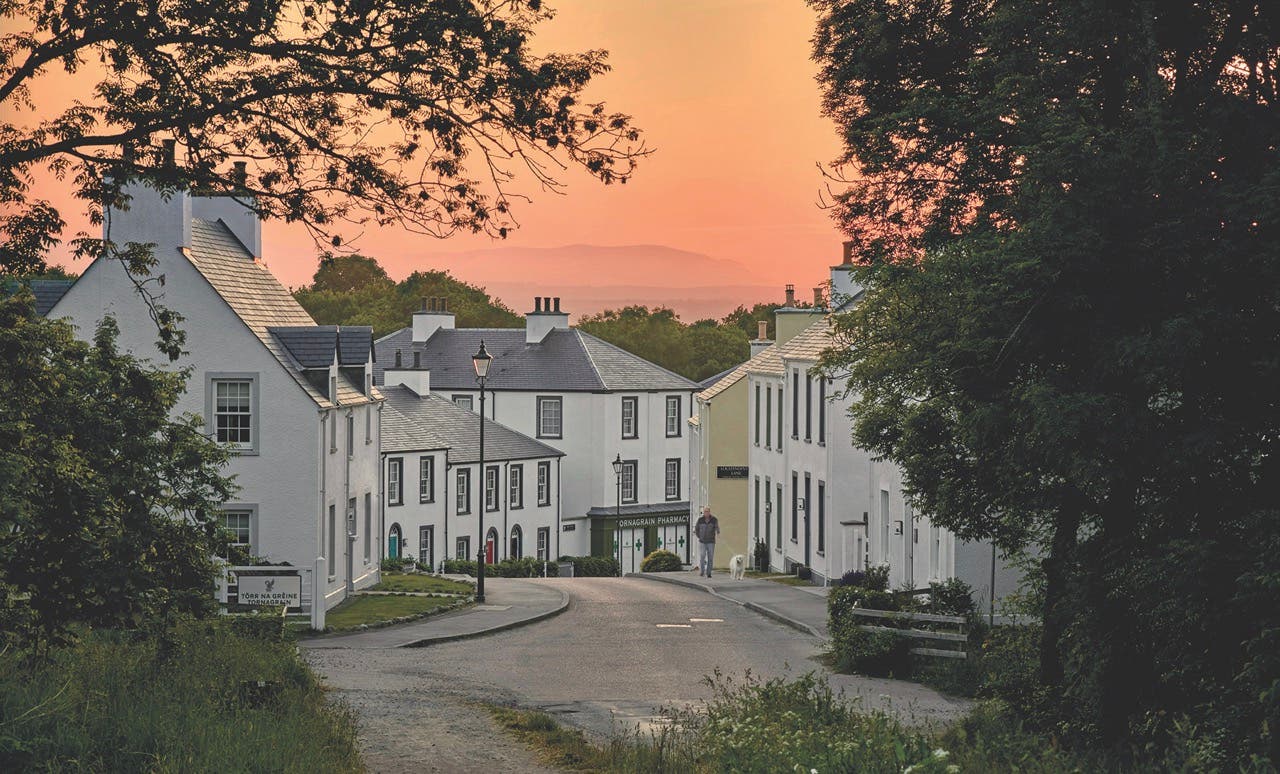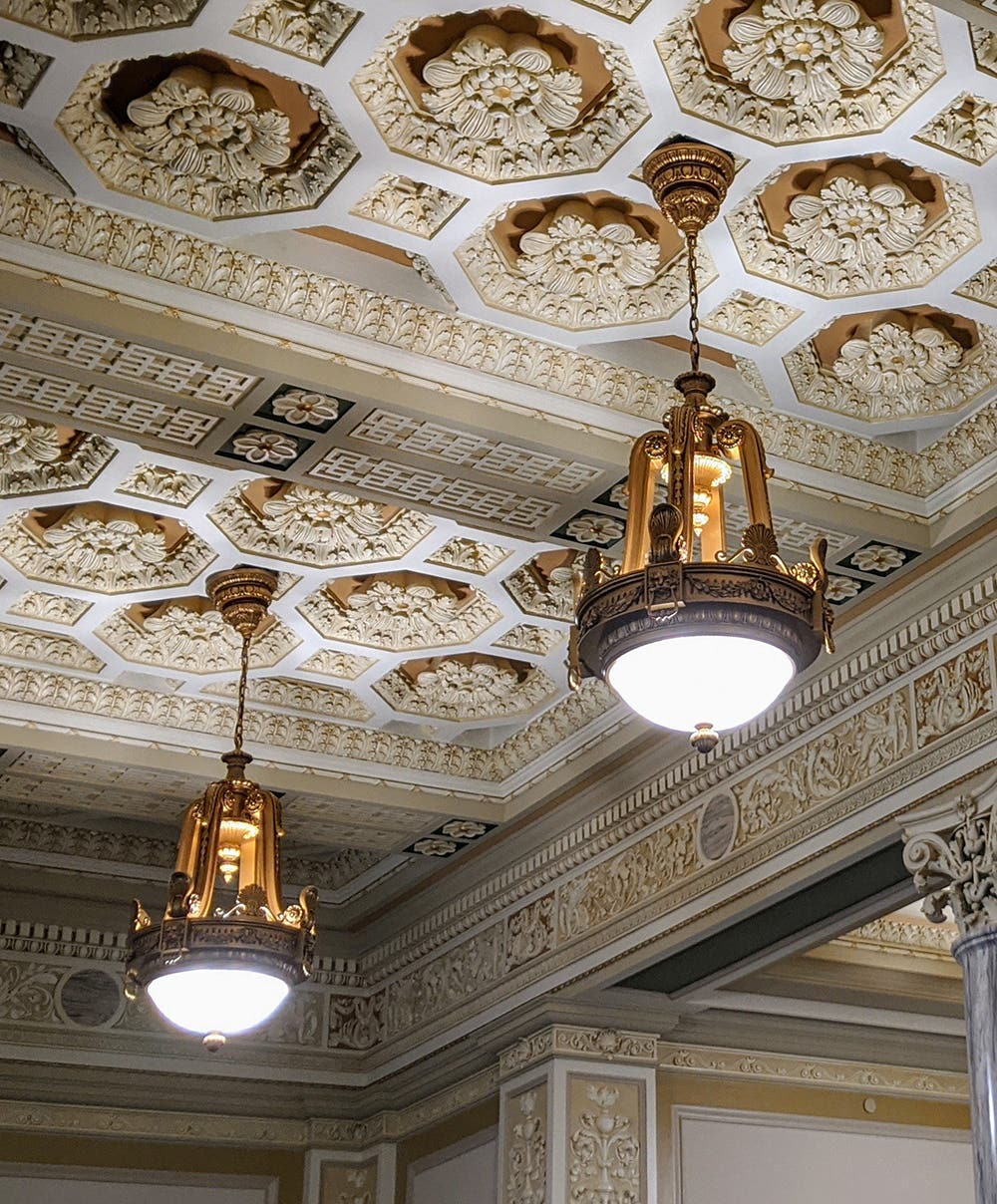
Features
A Tale of Two Capitol Centennial Restorations; Two Old Guys and Their Love of Lighting
On a fine Saturday morning in the summer of 1984, an older man with white hair pushed open the door to our small lighting showroom at 25 N. Sarah St. in St. Louis and said "Hello, I'm Ed Guth." He said it with an air of authority as if I should know him by reputation; indeed, I did.
As a collector and restorer of historic lighting since 1973, I was well aware of the products his company had made over the decades, especially the beautiful fixtures they made during the early years of the 20th century. At one time, prior to WWll, Guth Lighting was the largest lighting manufacturer in the world. Originally founded as St. Louis Brass Manufacturing Company by Edwin Guth Sr., his brother, and two friends in 1902, the 1904 St. Louis World's Fair gave this infant company its first big growth opportunity.
The Guth Company grew with the times and its engineering and lighting design team was at the forefront of changes in style and technology through the 1960s.
In 1962, ownership of the company transferred to Edwin Guth Jr., who helped expand the company until its sale in 1966. Ed Guth Jr.may have retired but, like his father before him, never lost his love for lighting and inventing.
On this particular Saturday, Ed Guth came in to see what "the new kid" was up to. He had heard that someone in town was making lights the old-fashioned way, by hand.
He looked to the ceiling and saw a restored Guth fan, a 1928 Guth invention that, instead of big blades, use a small plate with a lot of fins that drew cool air from the floor and distributed it around the room without moving the hot air above the fan; hundreds of thousands were sold throughout the world in the 1930s and '40s. Ed filled us in on how the technology was developed through years of trial and error. He was impressed that his old direct current fan motor had been re-wired for alternating current and that we could control it with a handheld remote. It was so quiet I told him he should have called it "The Whisper Fan."
We poured him a cup of coffee and listened as he told stories about "the old days at Guth", how as a curious 10 years old he would get scolded for going out in the factory to watch the men, who all spoke German, making the lights for the OK and MO Capitols. Neither of us had a clue that nearly 40 years later, our paths would cross again on this very subject.
Not too long after the 1904 World's Fair ended, two different groups of architects chose Guth Lighting to design and manufacture all of the fixtures, interior and exterior for two Midwest Capitols; Missouri (1913-1918) and Oklahoma (1914-1917).
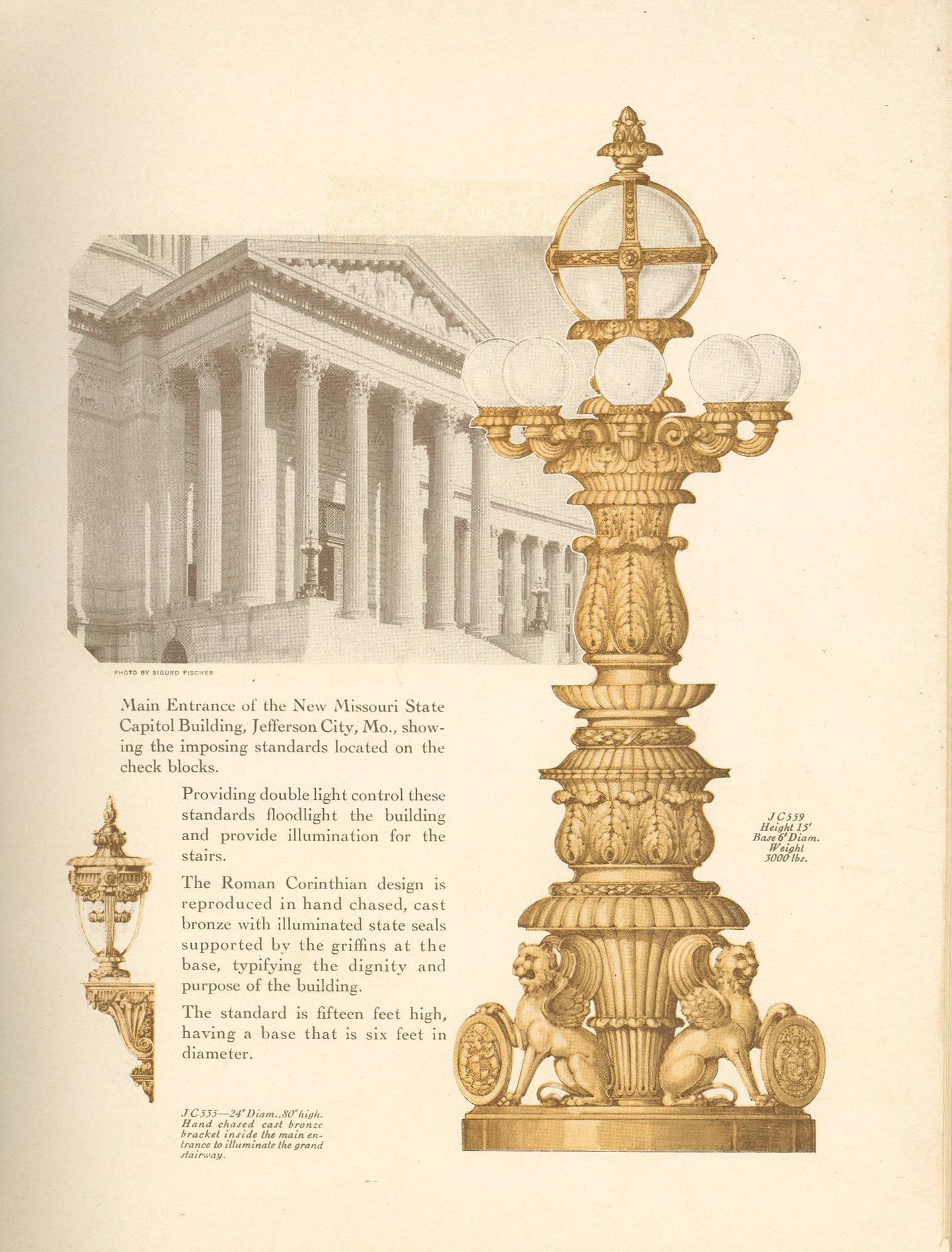
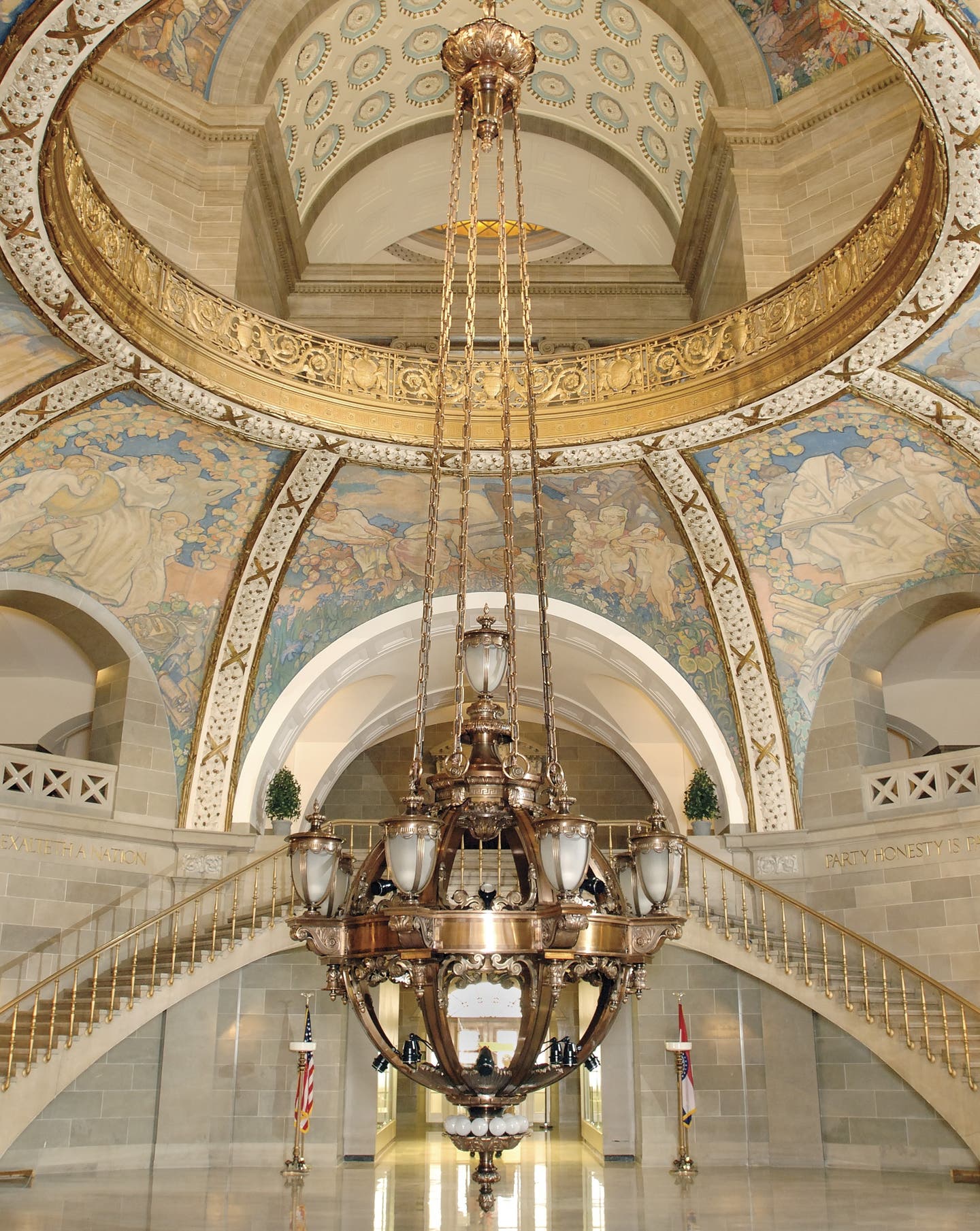
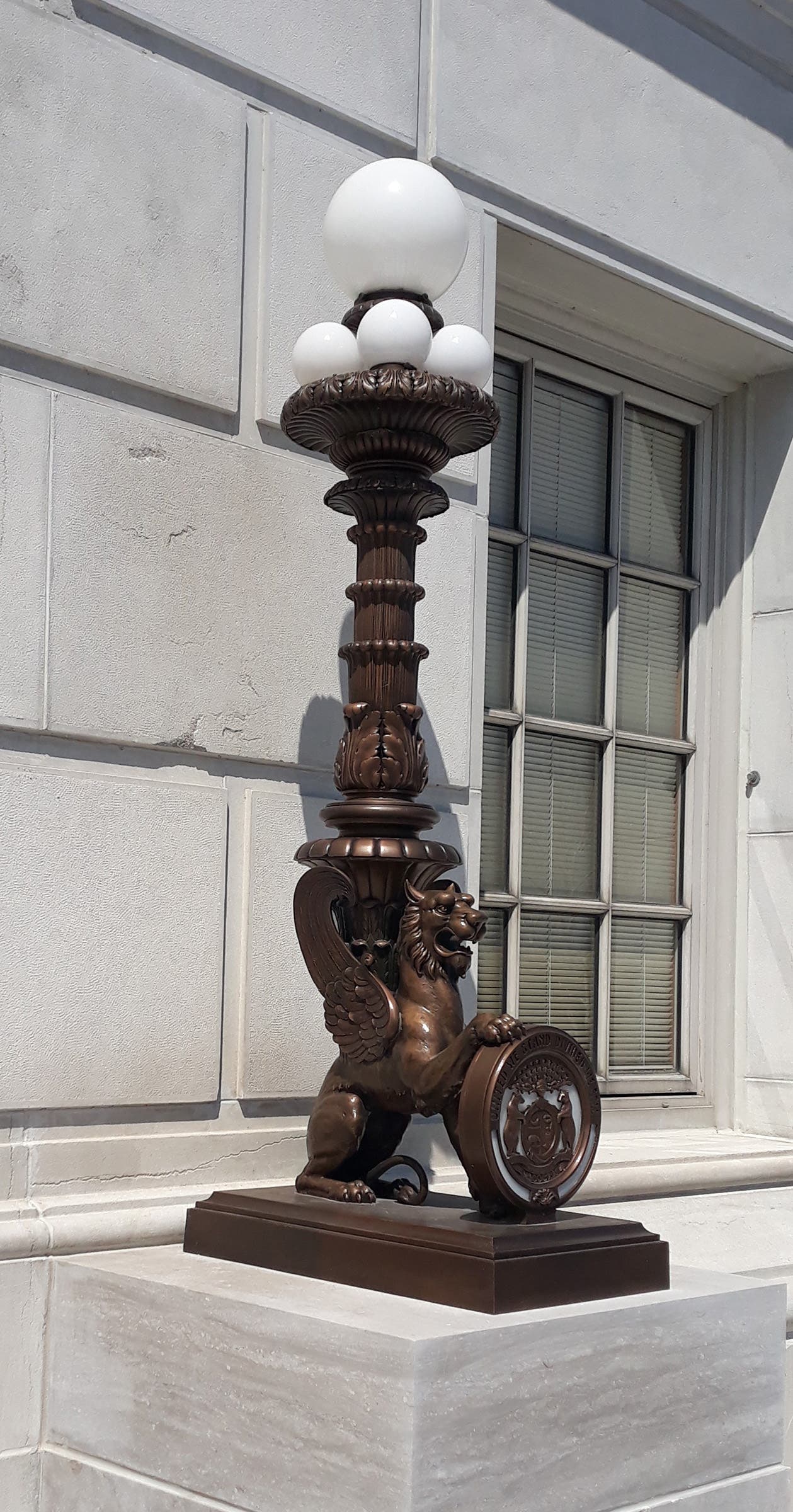
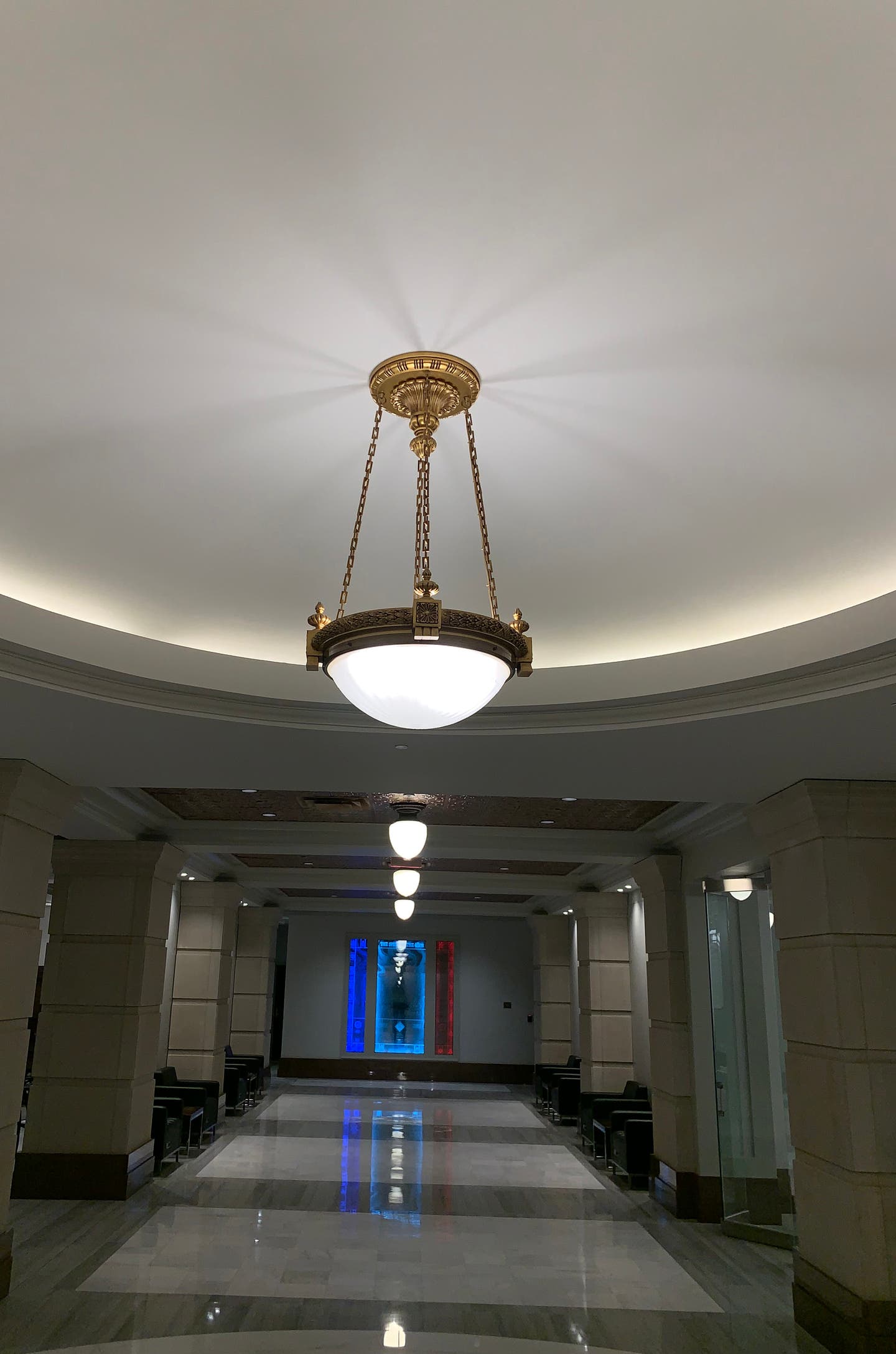
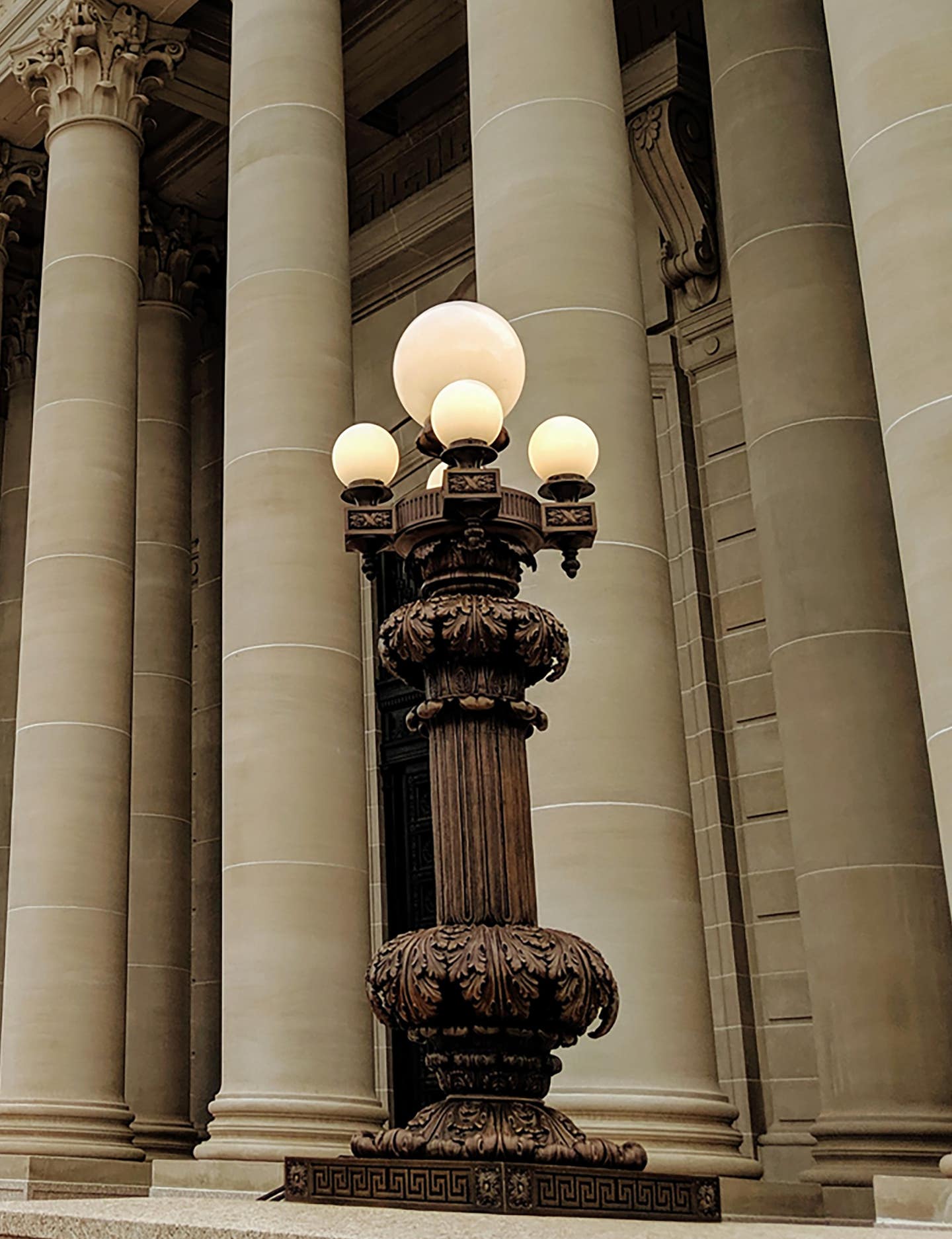
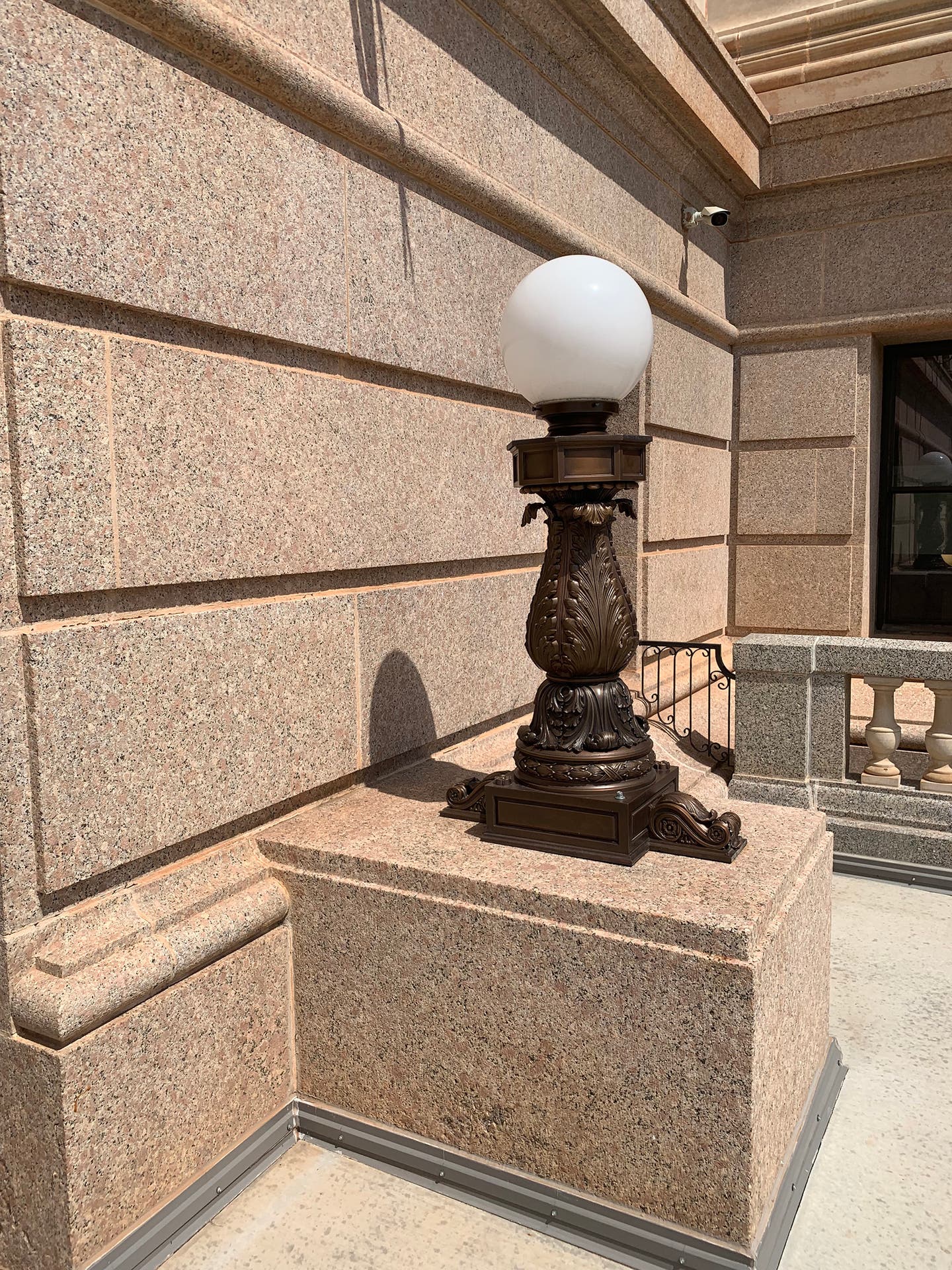
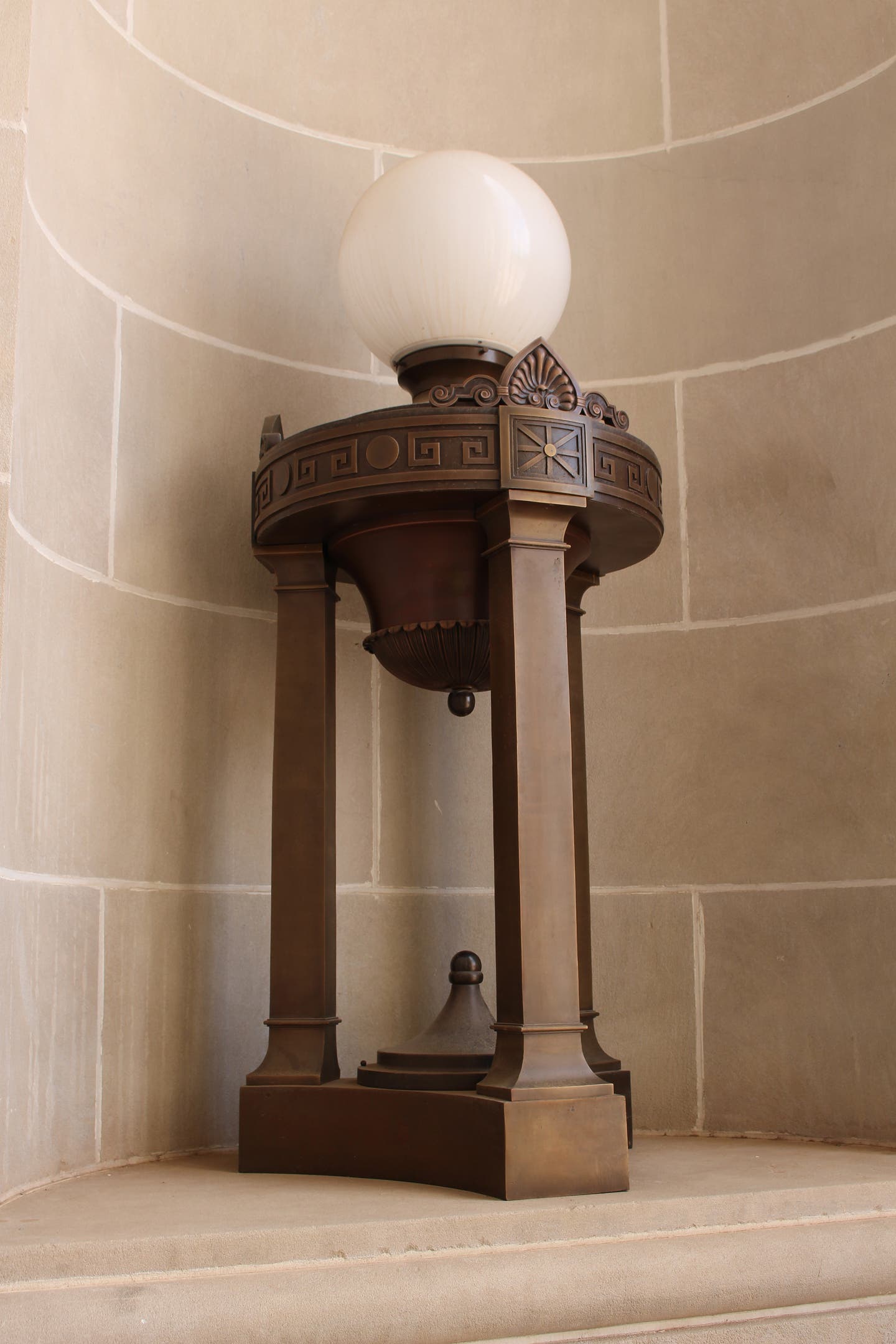

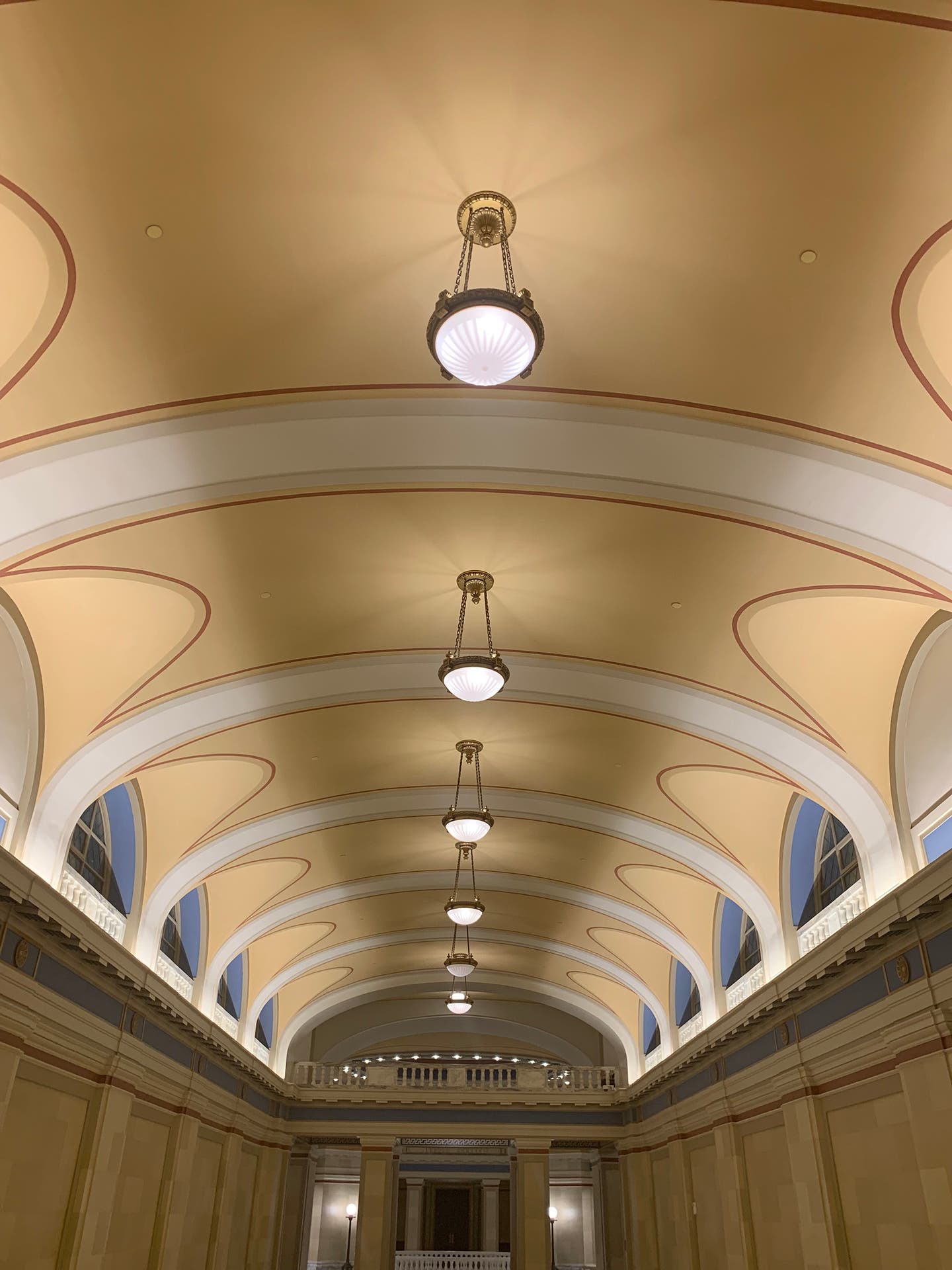
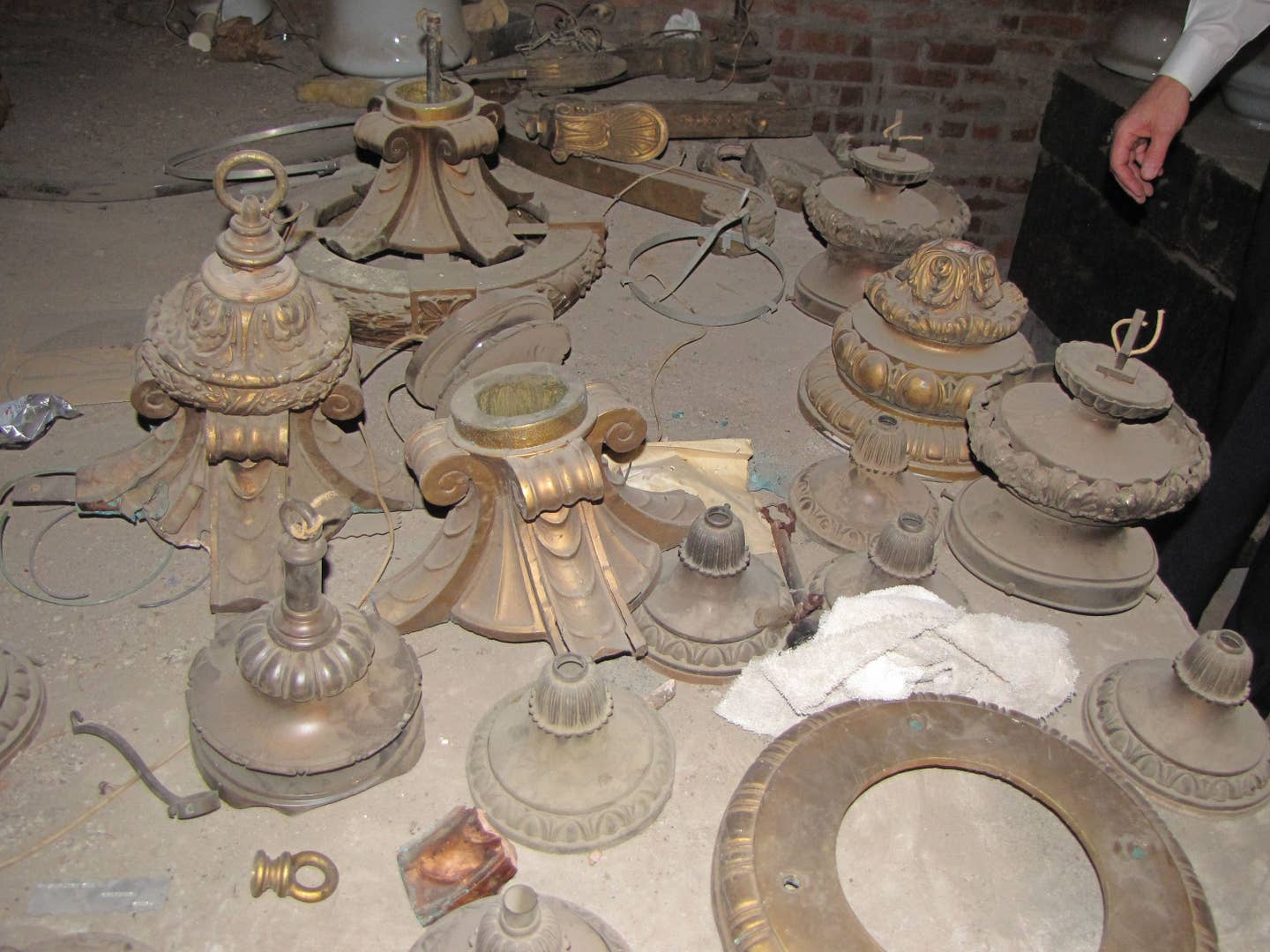
The exterior lights exhibit what Guth referred to as their "Roman Corinthian" design, a combination of classical Roman and Greek architectural ornamentation used in their cast bronze work.
When work started in Oklahoma, prior to the US entering WWl, the budget allowed for high-quality cast bronze exterior lighting. As work went on, budgetary concerns, complicated also by the entrance of the US into WWl, led to value engineering decisions made to reduce the cost of the interior lighting. Most of the large decorative fixtures that would likely have been made in brass or bronze were now made of ornamental cast plaster heavily plated with copper and patinated to look like bronze.
After many decades, many of the plaster fixtures gradually deteriorated leading to their removal and storage.
In the recent restoration of the Supreme Court, shown in the image below, plaster pieces in the attic of the Capitol were found and used for master patterns to create new lightweight cast aluminum fixtures finished in hand relieved deep gold matching the original color used by Guth. This method of replication was also used for several of the corridor fixtures and wall sconces in the Senate Chamber.
At Missouri, the budget allowed for the design of larger and more impressive fixtures. The exterior south entrance standards are 15 feet tall with the base being 6 feet in diameter; Guth's original design is shown below side by side with the standards, along with a smaller version, that was restored in 2020. The interior of the Capitol is filled with ornamental pendants, sconces, and standards but the most notable is the rotunda chandelier, shown below. It is the largest of its kind among all state Capitols; 95 feet tall, 14.5 feet in diameter, and weighing 9,000 lbs.
Back to 1984. When Ed finished his coffee we shook hands and he took his leave. He stopped a moment at the door, turned, and with a big smile said, "This has been great. It is just like when I was a kid at the old factory," and then he was gone.
Ed Guth left us in 2001, twenty years before these two Capitol Centennial restorations and the replication of his early work at Missouri and Oklahoma. He would be 105 years old this year so these restoration projects are a kind of Capitol Centennial celebration of combined craftsmanship spanning 10 decades.
What in 1984 seemed to be a chance meeting, now seems more like destiny. I realize that my love of historic lighting is mine, but I also know that much, if not most, of my knowledge comes from those who preceded me. I am grateful to them.
Gary Behm is a member of the Illuminating Engineers Society of North America and a Historic Lighting Consultant. The company he founded has been the recipient of several IES-Edwin Guth Lighting Design Awards: Thank you Ed.







